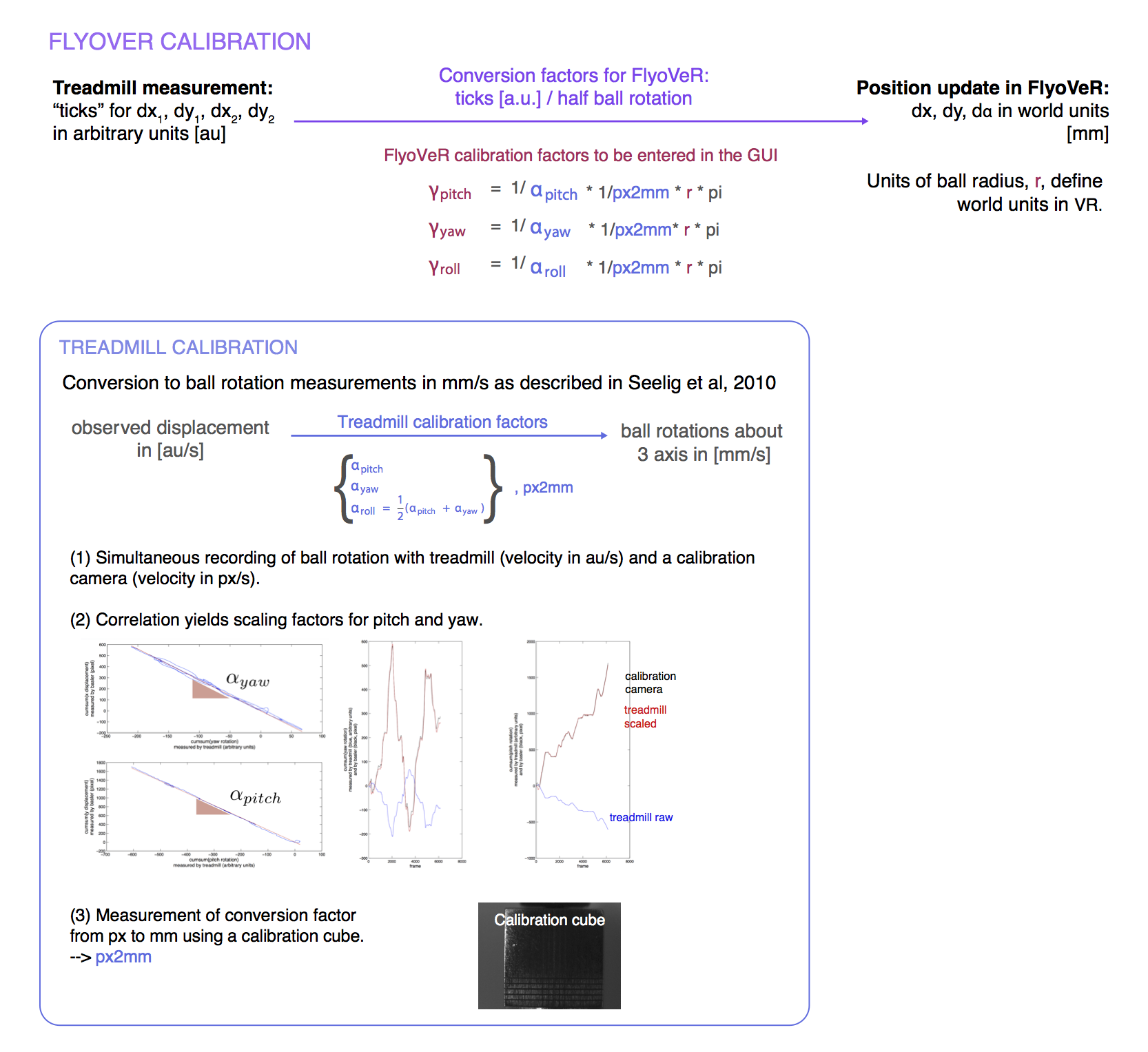| Navitabs | ||||||
|---|---|---|---|---|---|---|
| ||||||
|
FlyoVeR: 2D virtual reality for head-fixed walking flies
This page provides technical details and additional resources for the 2D virtual reality for head-fixed walking flies described in Haberkern et al. (2018).
Please note that this website is still under construction. We are working on adding more information shortly.
If you have questions, comments or feedback, please contact haberkern[at]janelia.hhmi.org.
Section overview:
| Table of Contents | ||
|---|---|---|
|
...
Additional information on fixation behavior in VR
In Haberkern et al. (2019) we compare fixation behavior of head-fixed walking flies in 1D and 2D virtual environments. Here we provide additional data on fixation behavior across different wild type genotypes. Further, we show how experimental conditions and preparation of flies before the experiment can influence the behavioral phenotype. We tested three wild type genotypes:
...
Download additional data here: AdditionalMaterial.pdf
...
Technical details about FlyoVeR
The FlyoVeR application is a modified version of the Jovian/MouseoVeR software [1], hence the name. Like MouseoVeR, FlyoVeR was built from several powerful third-party, free and open source software components. The 3D graphics, in-memory scene model, and callback-oriented rendering loop in FlyoVeR were implemented in the C++ programming language using the cross-platform open source OpenSceneGraph library (version 3.4). The graphical user interface was also implemented using C++ based on the cross-platform open source Qt toolkit (version 4.8). The cross-platform build and packaging system was implemented with CMake (version 3.4).
...
[1] Cohen, J.D., Bolstad, M., and Lee, A.K. (2017). Experience-dependent shaping of hippocampal CA1 intracellular activity in novel and familiar environments. eLife
...
How to obtain the calibration factors used in FlyoVeR
High-res version: FlyoVeR_Calibration.pdf
...
Virtual world construction
Naming conventions used in FlyoVeR
Custom Collada (version 2.4) format scene files used in our experiments were created with the free 3D modeling program Blender (version 2.73). The Collada file format is a standardized XML format used to describe 3D graphics. Each object within the 3D scene had a unique name and a set of properties. Properties such as the color and texture were specified in Blender as “materials” that were then assigned to the respective object. Three other properties were communicated to FlyoVeR as part of the object’s name string:
...
The flags for visibility, penetrability and concavity could be combined in the name of a single object. By default, objects were “visible”, “penetrable” and “convex”. When loading a new scene file, FlyoVeR parsed the names of each object and assigned corresponding properties to the objects composing the virtual scene. Invisible objects could be used to mark special areas within the scene, such as the starting point of each trial, and control the delivery of other stimuli based on the fly’s position inside the VR. Two items, a small sphere and a plane above it, representing the virtual animal size and viewpoint and the initial animal location, are required in every scene and have to be names "_camera_block_pm_" and "_start_", respectively.
Exporting blender scene as collada file
The finished scene can be exported in .dae format. In Blender (Version 2.73) chose File -> Export -> Collada (.dae). A new window opens, where the user can select a file name and directory for the to be exported collada file. If the scene contains materials with mapped image textures, make sure to select "Include UV Textures" and "Include Material Textures" in the "Texture Options" panels on the lower left.
Virtual worlds used in the paper
Under constructionAll virtual world files used in Haberkern et al. (2019) are provided together with the data on GitHub. Each raw data folder contains a folder named "virtualWorld" with the blender and collada files as well as the corresponding texture images.
...
Building FlyoVeR
FlyoVeR can be quickly installed using an installer. [Link to github directory will be posted shortly.]
...
How to run FlyoVeR
[Links to FlyoVeR userinterface elements currently not functional. Info on GUI will follow.]
...
